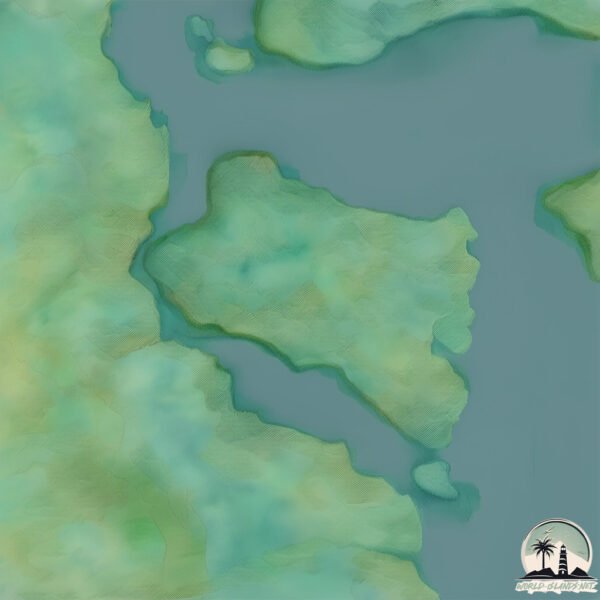Welcome to Quenay , a Temperate island in the South Pacific Ocean, part of the majestic Pacific Ocean. This guide offers a comprehensive overview of what makes Quenay unique – from its geography and climate to its population, infrastructure, and beyond. Dive into the details:
Geography and size of Quenay
Size: 28.9 km²Coastline: 31 kmOcean: Pacific OceanSea: South Pacific OceanContinent: South America
Quenay is a Medium Island spanning 29 km² with a coastline of 31 km.
Archipel: –
Tectonic Plate: South America – A major plate covering the South American continent and part of the Atlantic Ocean, known for the Andes mountain range and significant seismic and volcanic activity.
The geographic heart of the island is pinpointed at these coordinates:
Climate and weather of Quenay
Climate Zone: TemperateClimate Details: Temperate Oceanic ClimateTemperature: Warm Summer
Climate Characteristics: Known for its moderate year-round temperatures with ample rainfall and no dry season. Warm summers are characteristic.
Topography and nature of Quenay
Timezone: UTC-04:00Timezone places: America/La_PazMax. Elevation: 131 m Mean Elevation: 54 mVegetation: Evergreen Broadleaf ForestTree Coverage: 99%
The mean elevation is 54 m. The highest elevation on the island reaches approximately 131 meters above sea level. The island is characterized by Plains: Flat, low-lying lands characterized by a maximum elevation of up to 200 meters. On islands, plains are typically coastal lowlands or central flat areas.
Dominating Vegetation: Evergreen Broadleaf Forest
Vegetation: 4 vegetation zones – Diverse Island
Infrastructure and Travelling to Quenay
Does the island have a public airport? no .
Does the island have a major port? no .
The mean population of Quenay is 15 per km². Quenay is Gently Populated. The island belongs to Chile .
The name of the island resonates across different cultures and languages. Here is how it is known around the world: Arabic: جزيرة شيلوي; German: Chiloé; Spanish: Isla Grande de Chiloé; French: île de Chiloé; Portuguese: Ilha Grande de Chiloé; Russian: Чилоэ; Chinese: 奇洛埃岛
Continuing your journey, Laitec is the next notable island, situated merely km away.
Error 403 The request cannot be completed because you have exceeded your
quota . : quotaExceeded
Chile is classified as Emerging region: G20: Group of Twenty – Major economies comprising both developed and emerging countries, representing the world’s largest economies. The level of income is Upper middle income.
News – Latest Updates and Headlines from Quenay
Stay informed with the most recent news and important headlines from Quenay. Here’s a roundup of the latest developments.
Loading...
Please note: The data used here has been primarily extracted from satellite readings. Deviations from exact values may occur, particularly regarding the height of elevations and population density. Land area and coastline measurements refer to average values at mean high tide.

